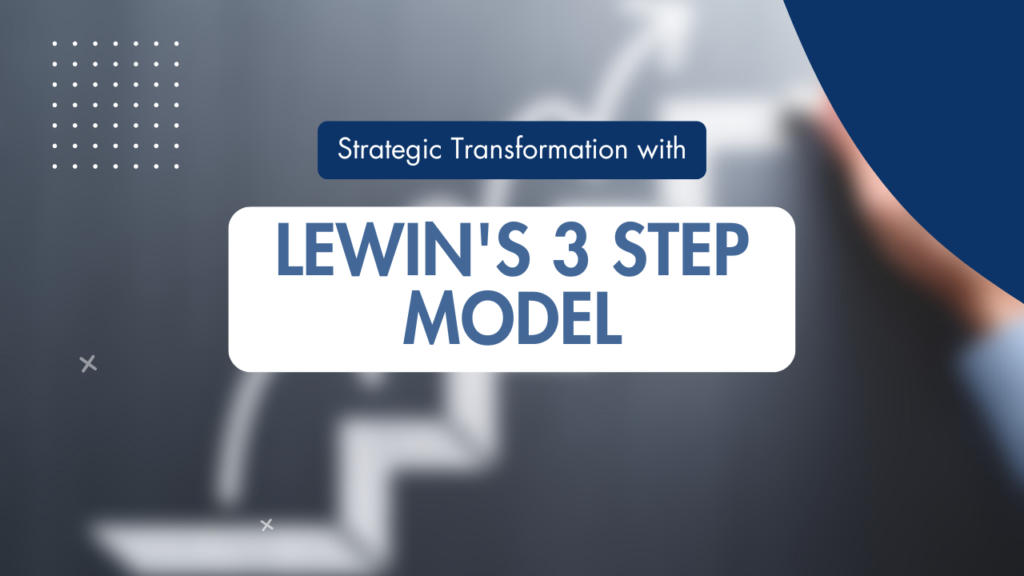Kurt Lewin’s 3-Step Model of Change Management offers a simplistic yet powerful approach to understanding and managing change. Crafted in the mid-20th century, Lewin’s model breaks down the process of organizational change into three fundamental steps. These steps are Unfreezing, Changing (or Moving), and Refreezing. This tripartite model provides a framework that is as relevant today as it was at the time of its conception. This framework is offering leaders a strategic blueprint for effecting change.
Delving into Lewin’s Three Steps:
Lewin’s model is predicated on the notion that change involves a process of preparing the organization to accept new ways of working (Unfreezing), implementing the change (Changing), and then solidifying this change as the new norm (Refreezing).
Unfreezing:
This initial phase is about preparing for change. It involves challenging and dismantling the existing status quo before any new way of operating can be accepted. Unfreezing requires recognizing the need for change and creating a compelling message that motivates stakeholders. It’s about reducing the forces that maintain current behaviors and practices, thereby creating a receptive environment for change.
Changing (or Moving):
Once the organization is unfrozen and open to change, the transition phase begins. This step involves moving toward new ways of working. It’s the phase where plans are executed, strategies are implemented, and the organization starts to shift. Support, guidance, and time for adjustment are crucial here, as stakeholders learn, adapt, and embrace new roles, processes, and perspectives.
Refreezing:
The final step in Lewin’s model aims to stabilize the organization at a new state of equilibrium. It involves reinforcing, supporting, and ensuring the sustainability of the newly adopted changes. This phase is crucial for embedding new practices into the organizational culture, involving mechanisms like policy changes, performance reward systems, and ongoing support to solidify the new status quo.
Implementing Lewin’s Model:
Applying Lewin’s model effectively requires careful attention to each stage of the process. It’s not merely about following steps but understanding the psychology behind change and the need for clear communication, support, and leadership throughout. Leaders must be proactive in addressing concerns, managing transitions delicately, and ensuring the organization’s culture aligns with the new ways of working.
Conclusion:
Lewin’s 3-Step Model of Change Management offers a timeless framework for navigating the complex terrain of organizational change. By focusing on Unfreezing, Changing, and Refreezing, leaders can guide their organizations through transformation with clarity and purpose. Despite its simplicity, the model’s power lies in its focus on the human elements of change, reminding us that at the heart of any transformation are the people it affects. In today’s fast-paced world, Lewin’s model serves as a reminder that effective change is both a process and a journey, requiring patience, understanding, and commitment every step of the way.

